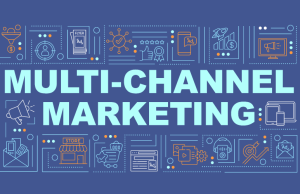By Meredith Ferguson
As a leader of a nonprofit organization, you might be looking toward the future with some uncertainty. Mobile giving, peer-to-peer fundraising, increasing social consciousness and an influencer culture, just to list a few, are developments that make leading an organization in 2019 vastly different than it was in 2009.
There are no signs of turning back to traditional marketing and fundraising anytime soon – if ever.
Today, it’s all about engagement and young people are leading the charge. Millennials and Gen Z would rather pay for a tour of your sustainable farm than cough up the $200 for a signature gala. They’d prefer to network while building a playground in an under-resourced neighborhood than rub elbows over pastry at a Chamber of Commerce business mixer. Young people are hyper-aware, growing up in a 24-hour news and social media cycle. They aren’t content to sit on the sidelines and mail in a check.
For nonprofits to thrive long into the future, it is imperative leaders and staff adapt and effectively engage a new generation of donors, volunteers and advocates. It’s exciting. After all, this is the generation that founded March For Our Lives. But, it’s also challenging.
The dinner parties and CEO meet-and-greets that engaged participants in the past aren’t likely to carry over. Connecting with young people means bringing your organization to them, not waiting for them to show up on your doorstep. It means understanding what they value and clearly demonstrating how you align with those values. It’s about turning your mission into a movement and building a community of which your new supporters can be a part.
Are you looking for inspiration? Here are a few organizations where leaders are doing it right as they look to the future.
American Civil Liberties Union (ACLU):
The election of President Donald J. Trump was a moment of crisis for many, particularly for those who grew up with Barack Obama in the White House. The new president’s rhetoric was shocking and threatening. In this environment, the ACLU emerged as the antagonist to President Trump’s policies. It became the go-to community for resistance to immigration bans, transgender discrimination in the military and family separation at the border.
The ACLU’s leaders smartly recognized this and made some shifts by introducing innovative ideas to harness this energy. They launched grassroots electoral campaigns under the new initiative PeoplePower.org. Following the 2017 immigration ban, ACLU partnered with Lyft to collect donations from riders who chose to “Round up and Donate.” In 2018, the ACLU launched a quiz show, partnering with influencers such as John Legend, Daveed Diggs and Michael Bennett, to help educate young people on broken aspects of the criminal justice system.
These efforts are paying off for the civil rights organization. The group’s membership has spiked from 400,000 before President Trump’s election to 1.84 million. Online donations increased from less than $5 million annually to $120 million in 2017. The average age of its membership has decreased by 20 years, and people of color now account for 16 percent of membership.
“Until Trump, most of our support came from people who have been with us since we challenged Nixon,” Anthony Romero, the ACLU’s executive director, told the New York Times. “Now we’re kind of cool. Cool’s not a word generally associated with us.”
Planned Parenthood:
While President Trump and many conservatives paint Planned Parenthood as a chain of abortion clinics, leaders of the women’s health organization has positioned it as a healthcare organization that advocates for the sexual health of all women. And, Planned Parenthood is reaching young people where they are — online.
Under the threat of the federal government defunding what it has budgeted for Planned Parenthood, the organization galvanized its supporters and expanded its footprint. The nonprofit launched digital, TV and grassroots campaigns to educate the masses on the extent of services provided, everything from cancer screenings to routine check-ups. The leaders invested $30 million in getting young people to vote and even created an internal team dedicated to digital advocacy and fact-sharing. The healthcare provider also teamed up with microblogging site Tumblr and SXSW to reach wider audiences.
Just six weeks following Election Day, Planned Parenthood had received more than 300,000 individual donations, 40 times its usual rate. And, 70 percent of those donations were from first-time donors, about half of whom are Millennials. The organization is poised for continued engagement, too. From July 2016 to June 2017, the supporter base grew by 1.3 million people.
World Wildlife Fund:
The World Wildlife Fund (WWF) has become a digital powerhouse recently; a strategic shift aimed to directly appeal to younger audiences.
WWF launched in 2015 the #EndangeredEmoji campaign, which matched 17 animal emojis with endangered species accompanied by educational information. The campaign generated more than 560,000 social media mentions. In just two months following the launch, nearly 60,000 people had signed up for the campaign. This came on the heels of #LastSelfie, a Snapchat campaign featuring endangered animals with the message “Don’t let this be my #lastselfie.” This call to action enabled WWF to reach the monthly donation target in only three days.
WWF’s leaders understand two key truths to reaching young people: 1) Meet them where they are. These campaigns used platforms and a language young people are immersed in every day; and, 2) Make it simple. As WWF International Digital Innovation Manager Adrian Cockle told the online site Slate: When it comes to fundraising, giving people a simple way to donate is key. By using one of the world’s biggest social platforms to highlight endangered species, we’re hoping to raise vital funds for their conservation as well as raising awareness globally.”
As you strategize the best ways to engage young people in your cause, keep these tips in mind:
- Demonstrate the tangible impact of support
Make sure your supporters know just what they are accomplishing by giving you their support. As the ACLU directly tied funding and advocacy support to keeping families together, you must tell stories that share the impact your supporters are having on real people. Make it easy for them to see precisely where their money goes and exactly how they are helping to make a difference.
- Include a variety of ways for people to help
Whether someone wants to host a peer-to-peer fundraiser on social media, sign a petition, canvas the neighborhood, or plant a garden, make sure you can facilitate that involvement. Truly value the diverse ways younger generations can harness energy to make a difference for your organization, even if (and especially when) it hasn’t been done before.
- Offer a community
A sense of belonging is a strong driving force for Millennials and Gen Z. It’s the human tendency that explains the popularity of social media. We all want to belong and we fear missing out. By including your supporters in the stories you share and creating opportunities for them to advocate your cause to their peers, you’re inviting them into your circle.
Having a legacy brand can be an advantage to a mission-driven nonprofit … provided you are looking around the corner to get younger people involved going forward.
***
Meredith Ferguson is managing director of DoSomething Strategic in New York City.









